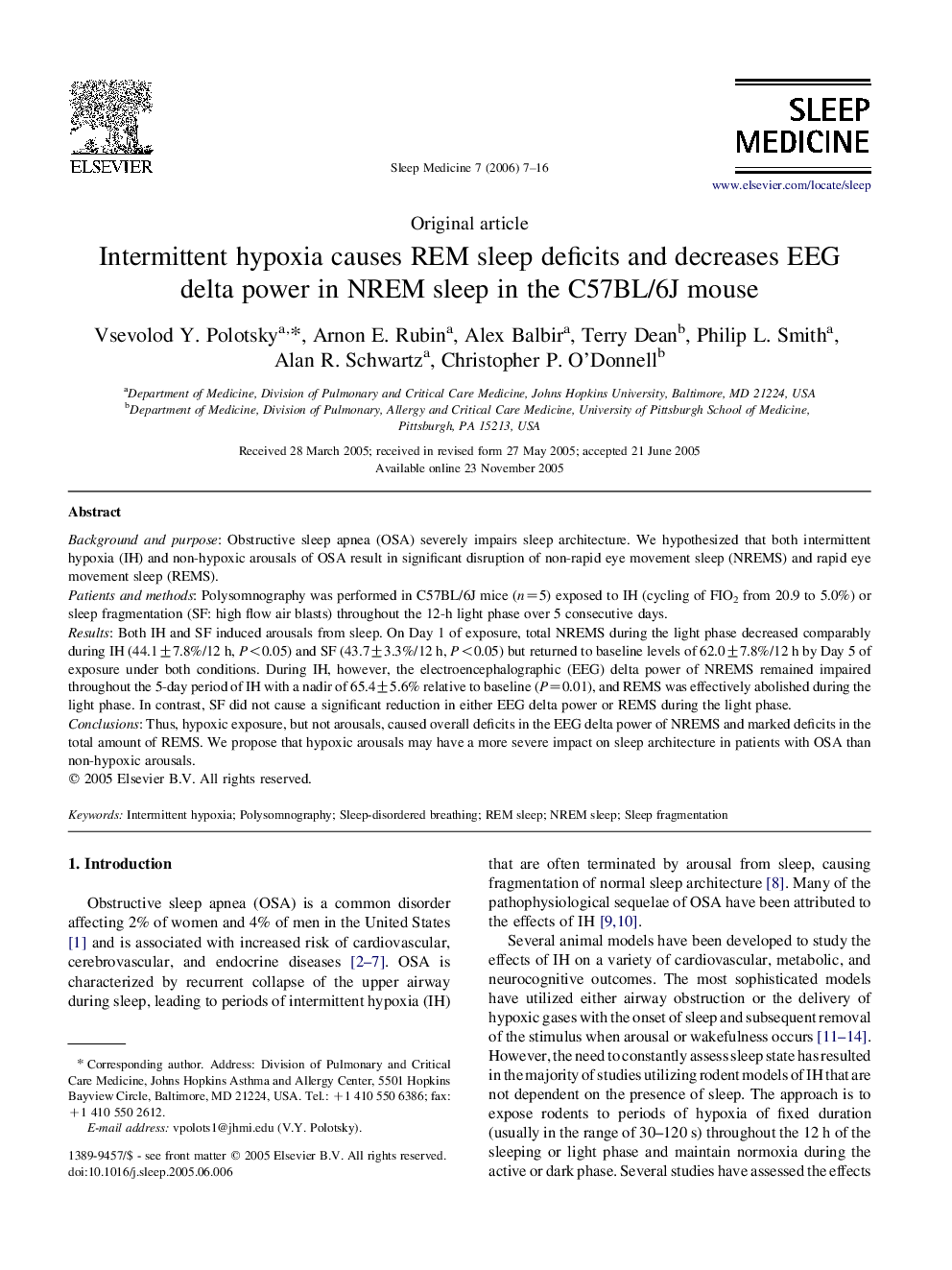| Article ID | Journal | Published Year | Pages | File Type |
|---|---|---|---|---|
| 3177793 | Sleep Medicine | 2006 | 10 Pages |
Background and purposeObstructive sleep apnea (OSA) severely impairs sleep architecture. We hypothesized that both intermittent hypoxia (IH) and non-hypoxic arousals of OSA result in significant disruption of non-rapid eye movement sleep (NREMS) and rapid eye movement sleep (REMS).Patients and methodsPolysomnography was performed in C57BL/6J mice (n=5) exposed to IH (cycling of FIO2 from 20.9 to 5.0%) or sleep fragmentation (SF: high flow air blasts) throughout the 12-h light phase over 5 consecutive days.ResultsBoth IH and SF induced arousals from sleep. On Day 1 of exposure, total NREMS during the light phase decreased comparably during IH (44.1±7.8%/12 h, P<0.05) and SF (43.7±3.3%/12 h, P<0.05) but returned to baseline levels of 62.0±7.8%/12 h by Day 5 of exposure under both conditions. During IH, however, the electroencephalographic (EEG) delta power of NREMS remained impaired throughout the 5-day period of IH with a nadir of 65.4±5.6% relative to baseline (P=0.01), and REMS was effectively abolished during the light phase. In contrast, SF did not cause a significant reduction in either EEG delta power or REMS during the light phase.ConclusionsThus, hypoxic exposure, but not arousals, caused overall deficits in the EEG delta power of NREMS and marked deficits in the total amount of REMS. We propose that hypoxic arousals may have a more severe impact on sleep architecture in patients with OSA than non-hypoxic arousals.
